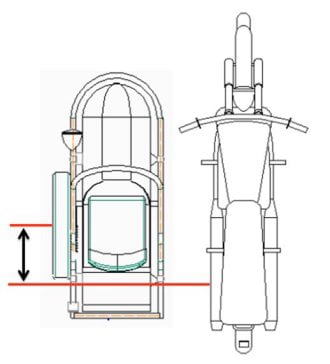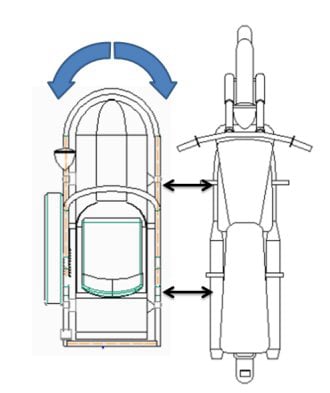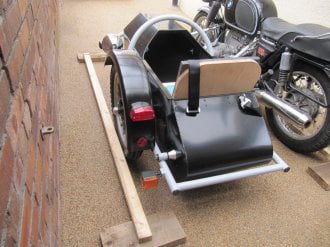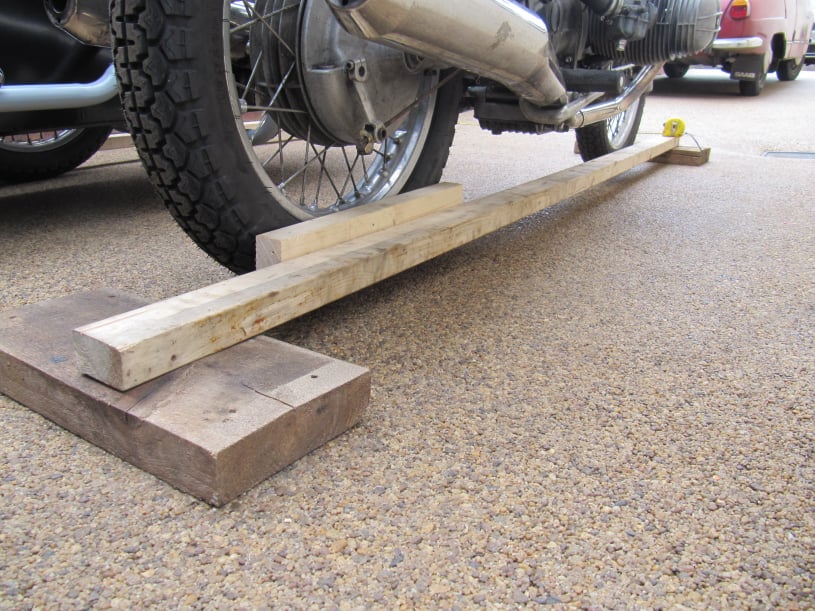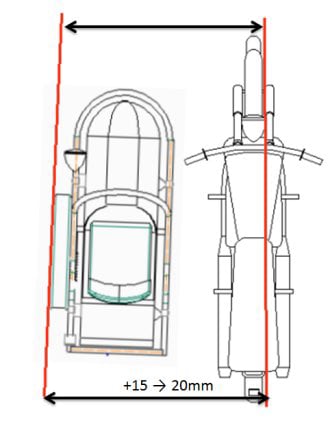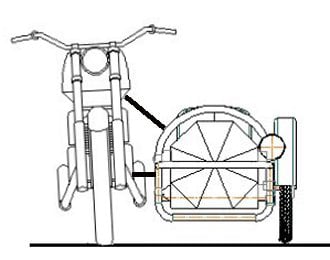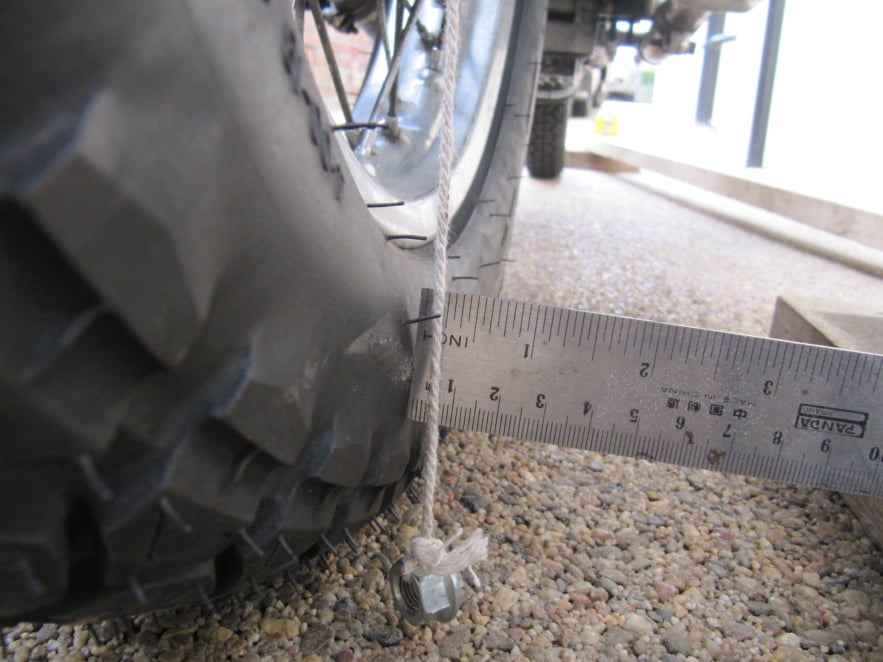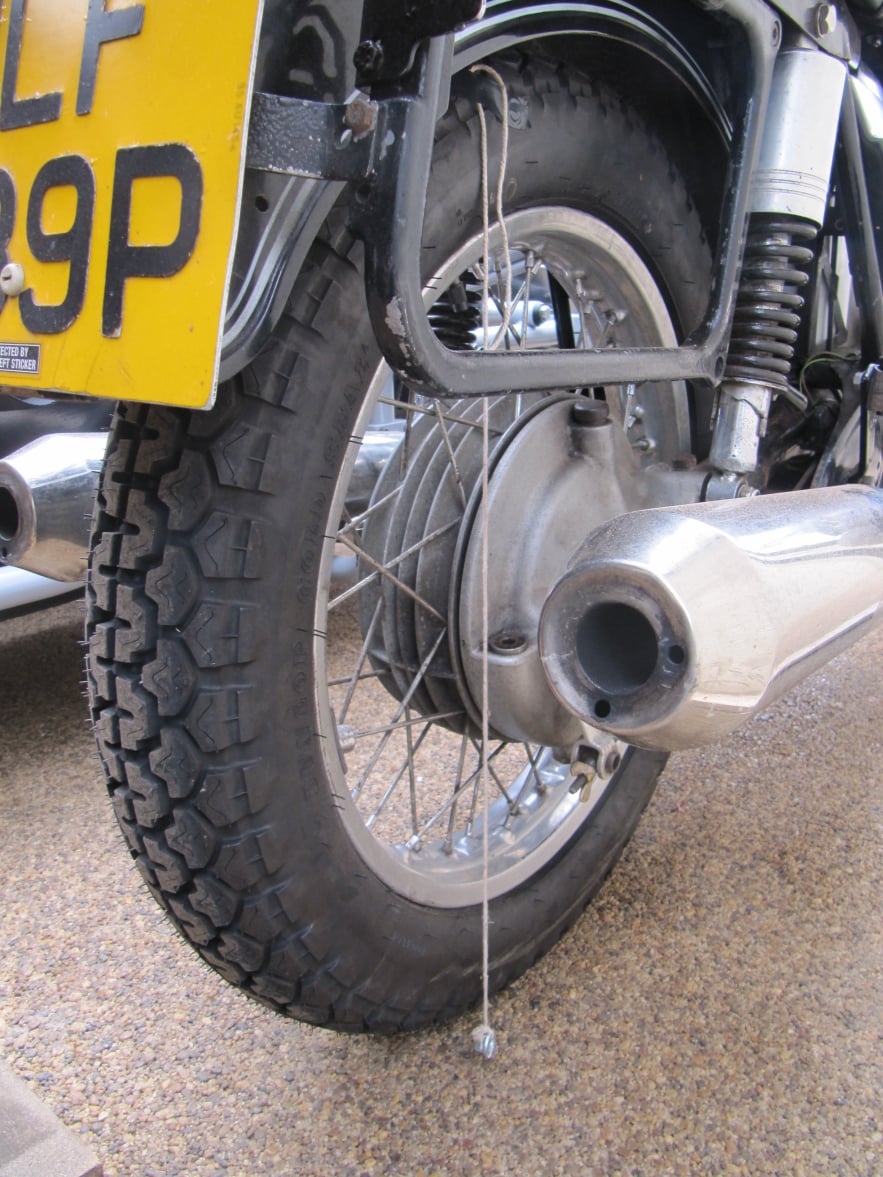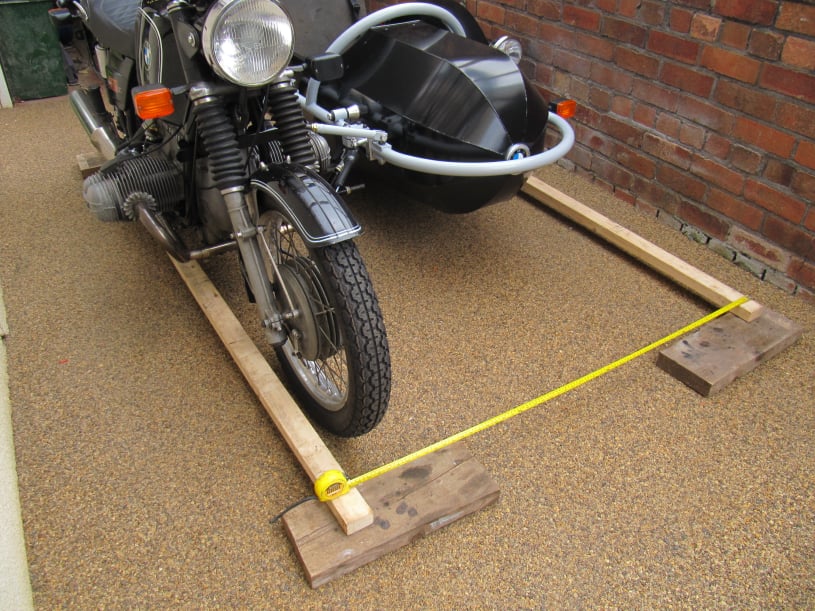
Sidecar Adjustments
There are three adjustments to consider when setting up a sidecar.
Sidecar Lead
Toe-in
Lean-out
In addition the sidecar should be set level.
This page shows a suggested method for adjusting each parameter.
In the interests of predicable handling and minimum tyre wear, the sidecar should be adjusted to have as little toe-in as possible and the motorcycle should lean out slightly.
